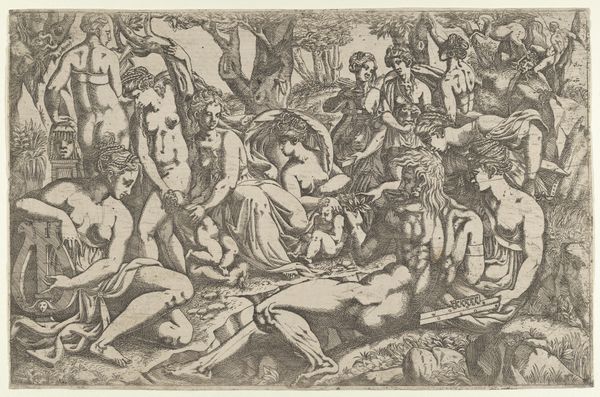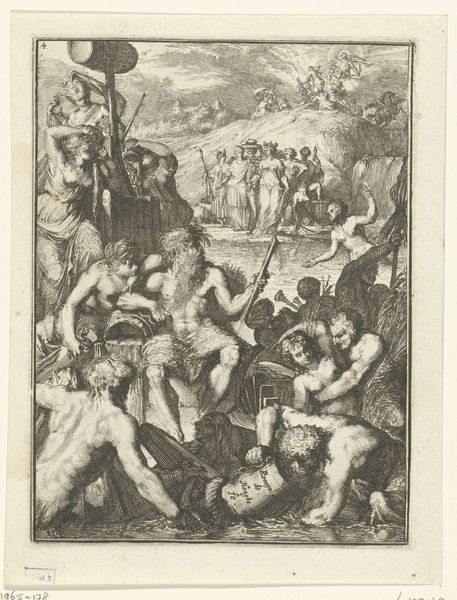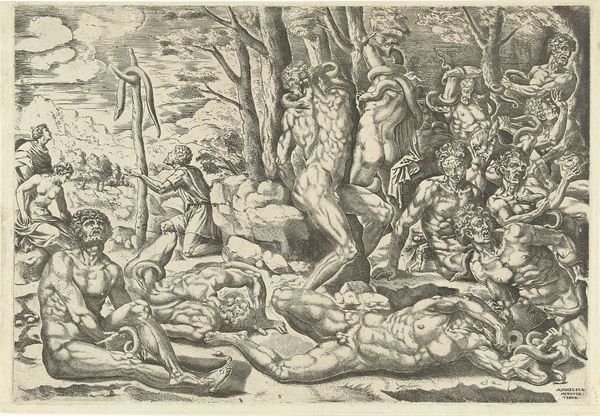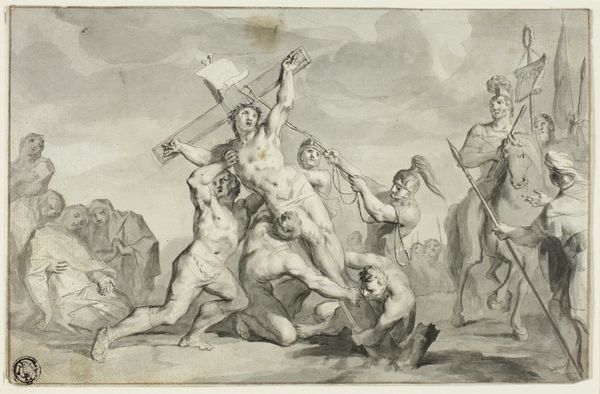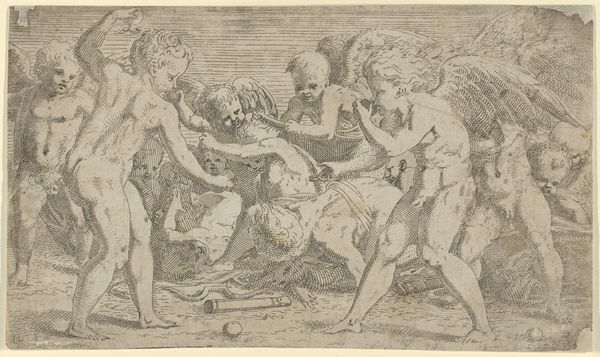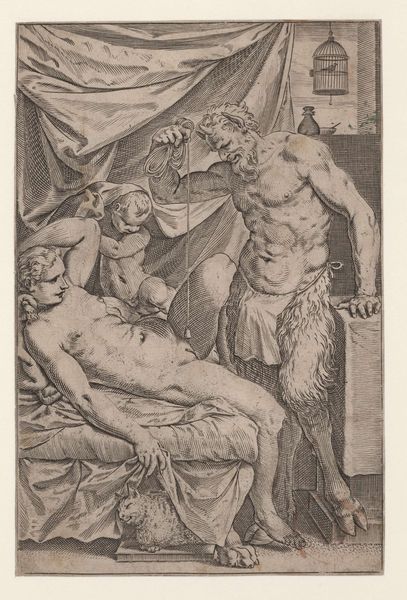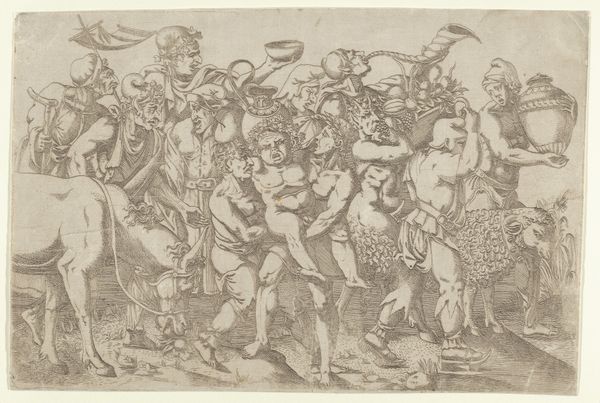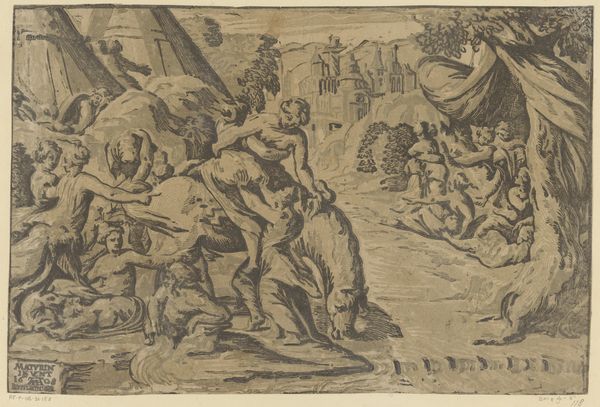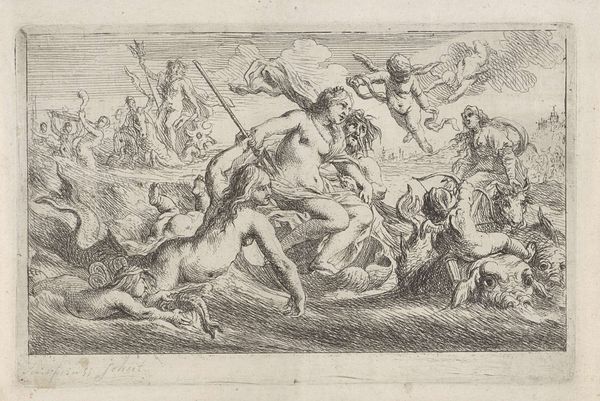
drawing, print
#
drawing
# print
#
figuration
#
11_renaissance
#
history-painting
#
male-nude
Dimensions: Sheet: 2 15/16 × 12 3/8 in. (7.4 × 31.5 cm)
Copyright: Public Domain
Editor: This is "Battle for the Banner," a print by Barthel Beham, created sometime between 1515 and 1571. The raw energy is captivating, almost chaotic. All these figures clashing... what historical context is packed into this piece? Curator: Indeed. Considering its era, the representation of nude male figures locked in combat reflects a Renaissance fascination with classical antiquity and ideals of masculinity. Yet, beyond the aesthetic, we must examine whose bodies are depicted and what socio-political messages the artist conveys through their interaction. What do you observe about the figures holding the banner? Editor: They seem central to the conflict, fiercely defending it. Is the banner a symbol of power, a challenge to authority? Curator: Precisely. Ask yourself, what authorities might have been challenged, or what powers asserted through the production and consumption of such imagery in 16th-century Germany? Consider the Reformation, rising class consciousness, and burgeoning humanism as potential influences. Who might have commissioned this? What values might it represent? Editor: So, it's not just a battle scene but also a visual argument, embedded in the period's tensions around power and belief. Curator: Exactly. Art never exists in a vacuum. Understanding the 'why' and 'for whom' adds a vital layer to our understanding, challenging us to consider whose stories are centered and whose are marginalized within the historical narrative. Editor: It’s amazing how one image can hold so much complexity. Looking at it now, I can see those layers more clearly. Curator: And remember, the questions we ask of art, like the battles depicted, are always evolving.
Comments
No comments
Be the first to comment and join the conversation on the ultimate creative platform.



